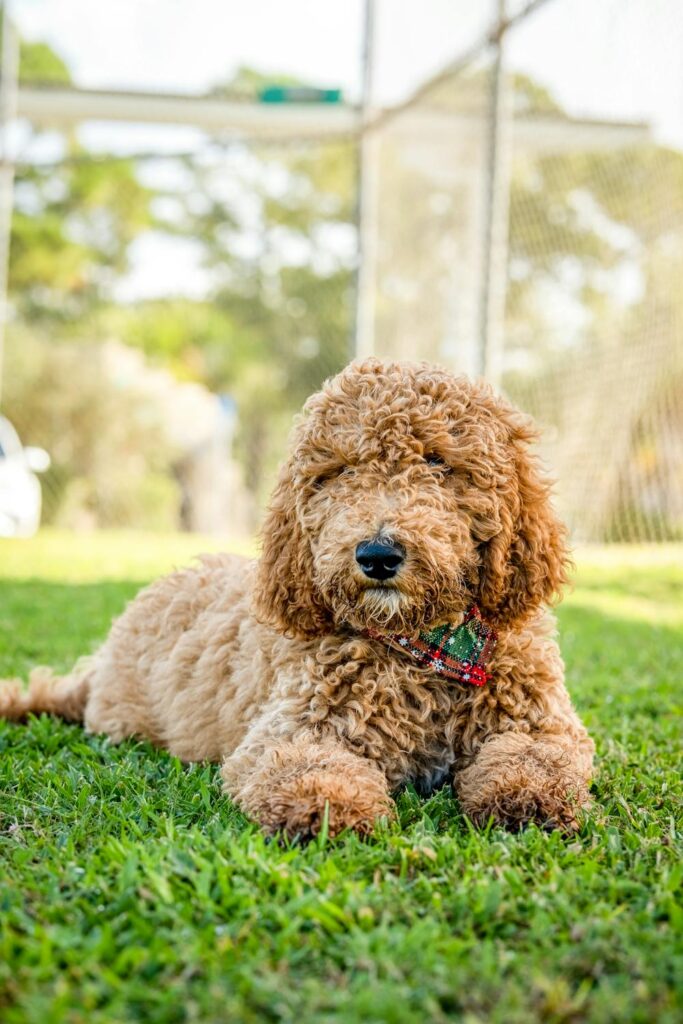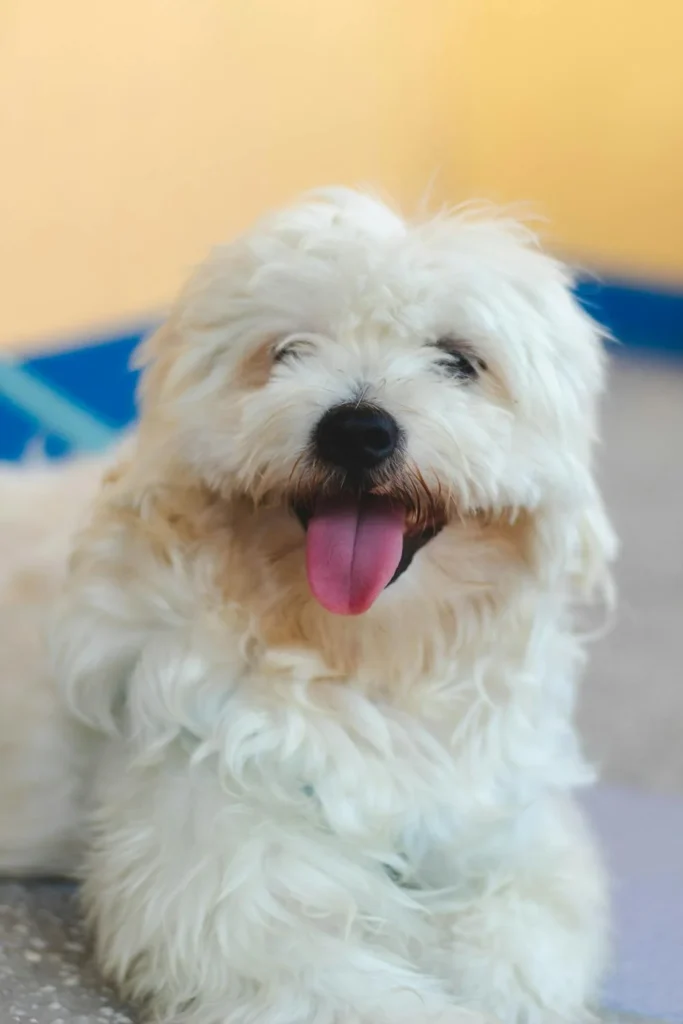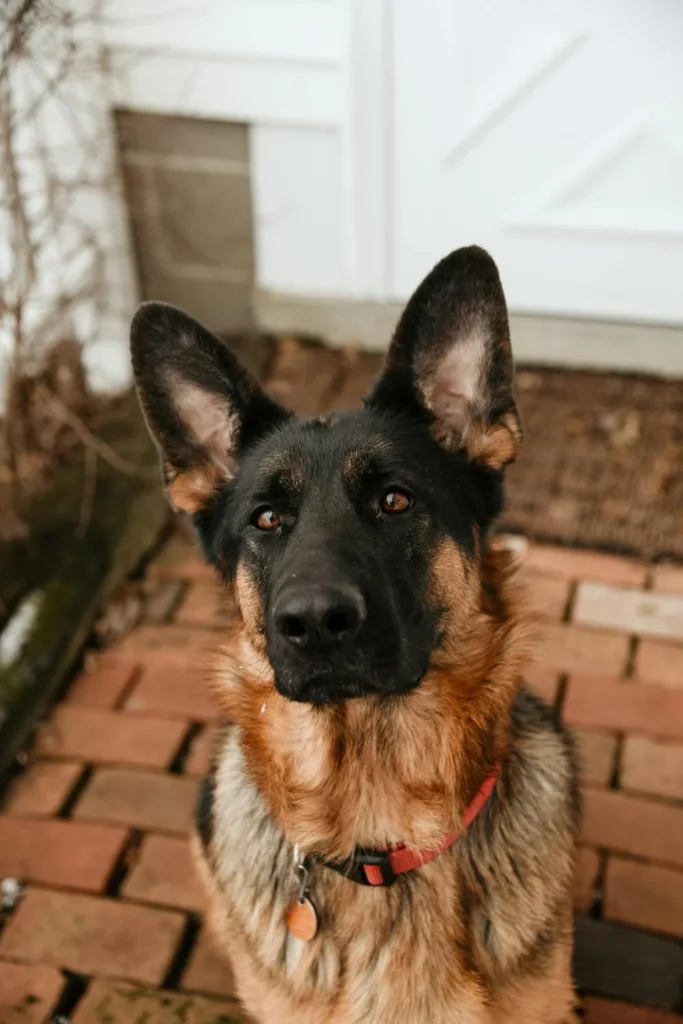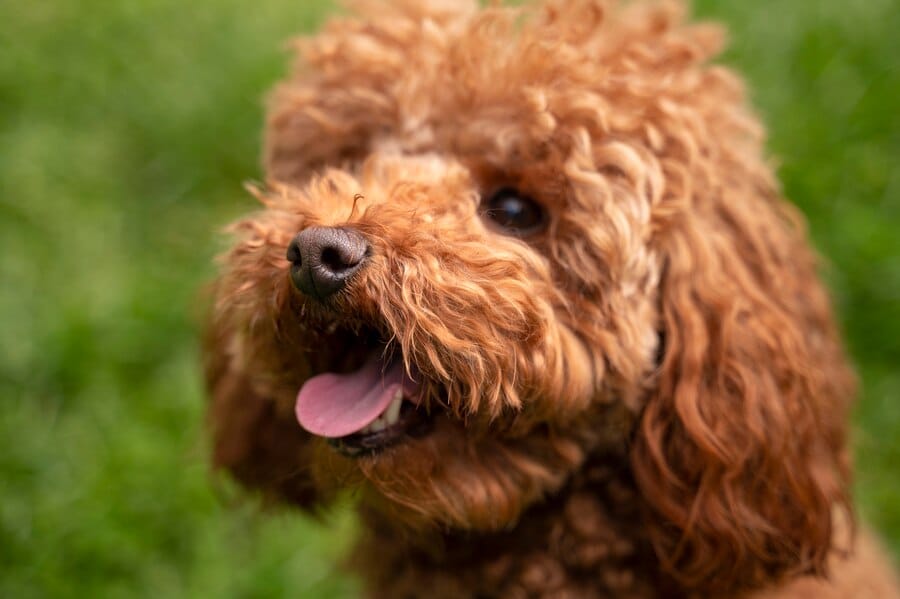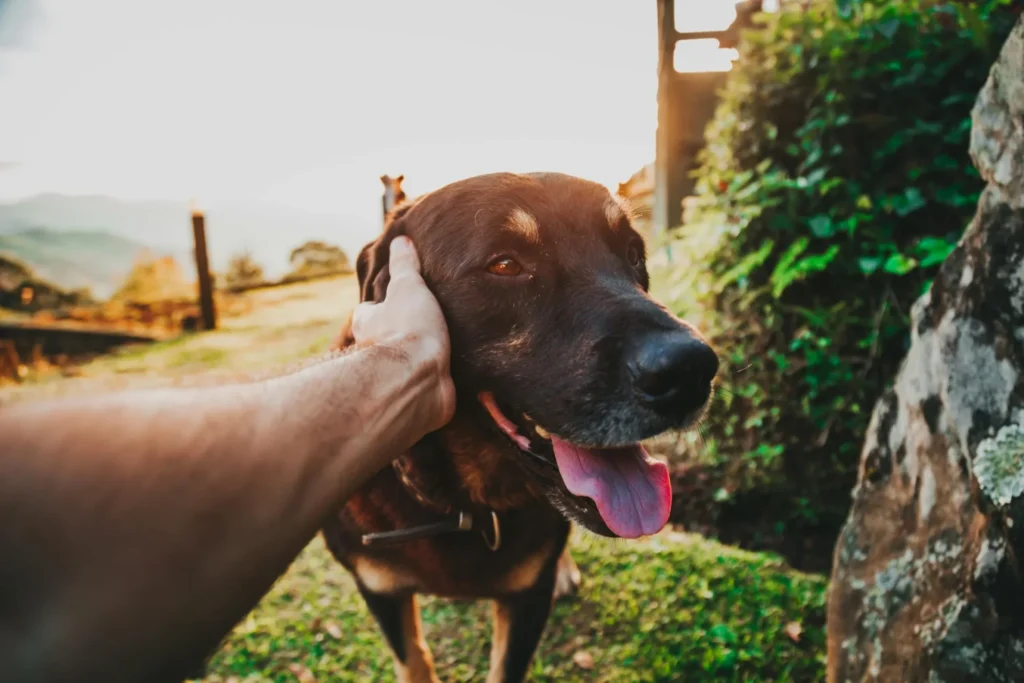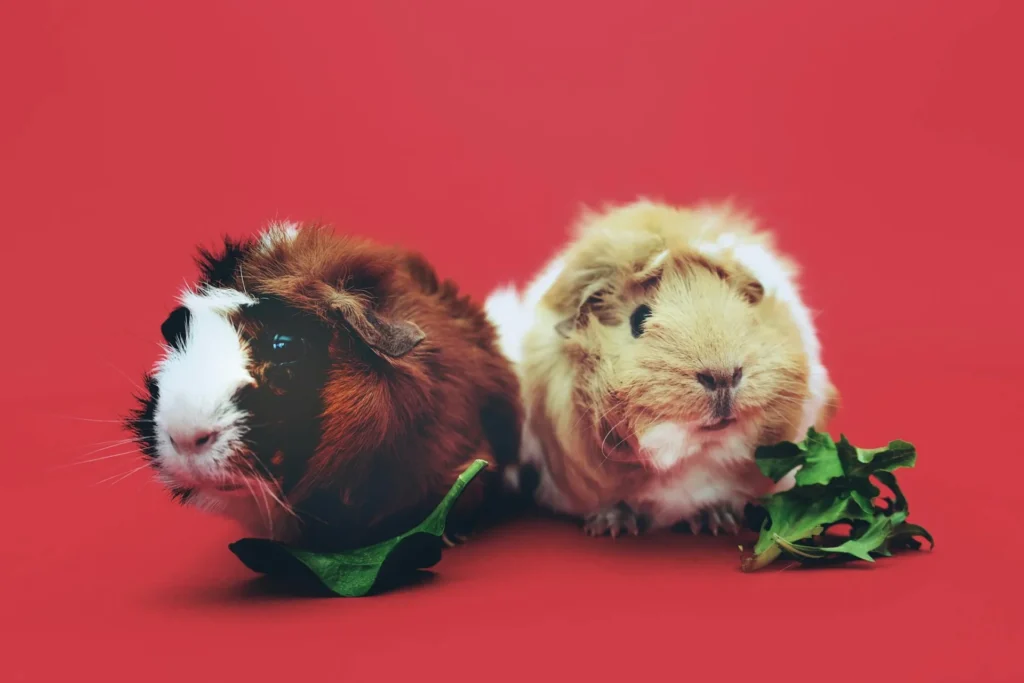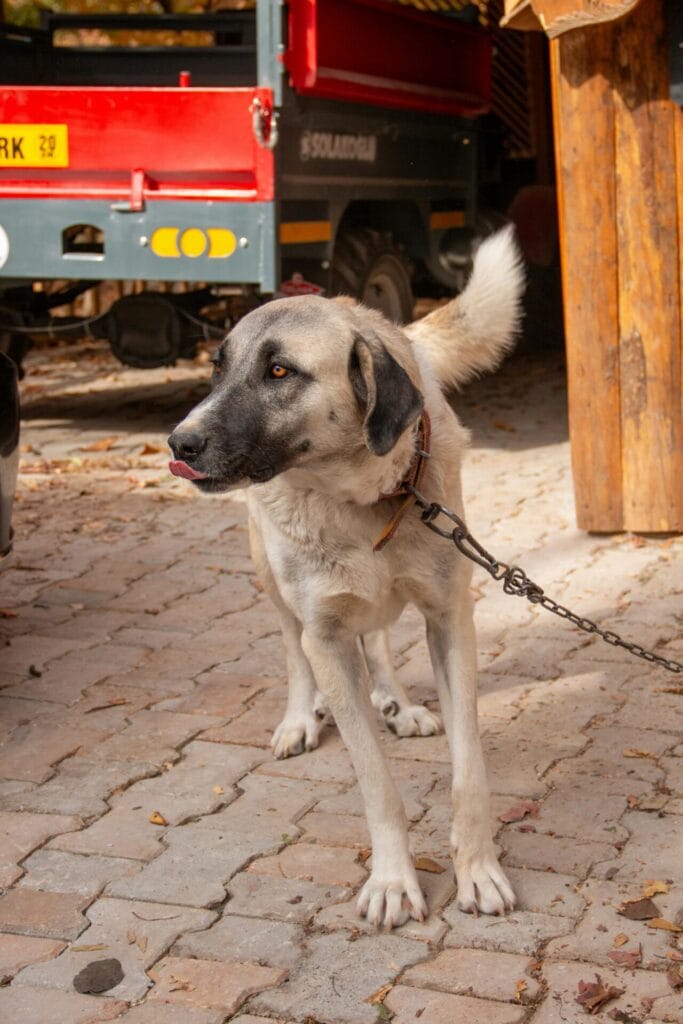- Introduction: Understanding Your GSP’s Eating Habits
- The Basics of GSP Nutrition
- Why Might Your GSP Not Be Eating?
- When to Be Concerned About Your GSP’s Appetite
- What’s Normal? GSP Eating Habits and Nutritional Needs
- How to Assess Your GSP’s Appetite and Eating Behavior
- Precautions: Preventing Appetite Issues in GSPs
- Solutions: Encouraging Your GSP to Eat
- When to Seek Professional Help
- Home Remedies and Nutritional Supplements
- FAQs: Everything Else You Need to Know About GSP Appetite
- Q1: How long can a GSP go without eating? ⏳
- Q2: Can stress cause my GSP to stop eating? 😰
- Q3: My GSP is only eating treats. Is this okay? 🍪
- Q4: Could parasites cause my GSP to lose their appetite? 🦠
- Q5: My female GSP is not eating. Could she be pregnant? 🤰
- Q6: Can dental problems cause appetite loss in GSPs? 🦷
- Q7: My GSP eats grass and then doesn’t want their food. Is this normal? 🌿
- Q8: Can changing my GSP’s food cause them to stop eating? 🥫
- Q9: My senior GSP is eating less. Is this normal? 👵
- Q10: Can hot weather affect my GSP’s appetite? 🌡️
- Conclusion: Keeping Your GSP Happy and Well-Fed
Introduction: Understanding Your GSP’s Eating Habits
As a veterinarian with over 15 years of experience specializing in sporting breeds, I’ve encountered numerous concerned German Shorthaired Pointer (GSP) owners asking, “Why is my German Shorthaired Pointer not eating?” This comprehensive guide will delve into the intricacies of GSP appetite, nutrition, and health to answer this question and many more.
German Shorthaired Pointers are known for their boundless energy and athletic prowess. These characteristics often translate to a hearty appetite, which is why it can be particularly concerning when your GSP suddenly loses interest in food. But don’t worry – we’re going to explore every aspect of this issue, from the basics to advanced solutions.
The Basics of GSP Nutrition
Before we dive into why your GSP might not be eating, let’s establish a foundation of knowledge about GSP nutrition. Understanding these basics will help you better assess your dog’s eating habits and overall health.
Nutritional Needs of German Shorthaired Pointers
German Shorthaired Pointers are high-energy, athletic dogs that require a diet rich in high-quality proteins and fats to fuel their active lifestyles. Here’s a breakdown of their key nutritional needs:
- Protein: 🥩 GSPs need a diet high in protein to maintain their lean muscle mass. Look for foods with 25-30% protein content.
- Fat: 🥓 Healthy fats provide concentrated energy for these active dogs. Aim for foods with 12-16% fat content.
- Carbohydrates: 🌾 While not as crucial as protein and fat, carbs provide quick energy. Complex carbs are preferable to simple sugars.
- Vitamins and Minerals: 🥕 A balanced diet should provide all necessary vitamins and minerals, but some GSPs may benefit from supplements (always consult your vet first).
- Water: 💧 Adequate hydration is crucial, especially for active GSPs.
Caloric Needs
The caloric needs of a GSP can vary greatly depending on their age, size, and activity level. Here’s a general guide:
| Activity Level | Calories per pound of body weight |
|---|---|
| Low | 25-30 |
| Moderate | 30-35 |
| High | 35-40 |
| Very High | 40+ |
For example, a 60-pound GSP with a high activity level might need around 2100-2400 calories per day. However, always consult with your veterinarian to determine the right caloric intake for your specific dog.
Feeding Schedule
Most adult GSPs do well with two meals a day, typically morning and evening. Puppies may require 3-4 smaller meals throughout the day. Consistency in timing can help regulate your GSP’s appetite and digestion.
Now that we’ve covered the basics, let’s explore why your GSP might not be eating.
Why Might Your GSP Not Be Eating?
There are numerous reasons why a German Shorthaired Pointer might lose their appetite. Some are benign and easily resolved, while others may require veterinary intervention. Here are some common causes:
- Dental Issues: 🦷 Tooth pain or gum disease can make eating uncomfortable.
- Gastrointestinal Upset: 🤢 Nausea, vomiting, or diarrhea can suppress appetite.
- Stress or Anxiety: 😰 Changes in routine, new environments, or loud noises can affect eating habits.
- Picky Eating: 🍽️ Some GSPs develop preferences for certain foods and may refuse others.
- Recent Vaccinations: 💉 Temporary loss of appetite can occur after vaccinations.
- Medications: 💊 Some medications can suppress appetite as a side effect.
- Illness: 🤒 Many health conditions, from minor infections to more serious diseases, can cause loss of appetite.
- Pain: 🤕 Any form of pain, whether from injury or chronic conditions like arthritis, can reduce desire to eat.
- Parasites: 🦠 Internal parasites can cause appetite loss and other gastrointestinal symptoms.
- Heat: 🌡️ During hot weather, some dogs eat less.
- Age-related Changes: 👵 Older dogs may experience a natural decrease in appetite.
- Recent Anesthesia: 😴 If your GSP has recently undergone a procedure requiring anesthesia, temporary appetite loss is common.
- Food Quality: 🥫 Poor quality or spoiled food can cause aversion.
- Overfeeding: 🍖 If your GSP is getting too many treats or table scraps, they may not be hungry for their regular meals.
- Behavioral Issues: 🐕 Some dogs may develop food guarding or other behavioral issues around eating.
Understanding these potential causes is the first step in addressing your GSP’s appetite issues. In the next sections, we’ll explore how to identify when appetite loss is a concern and what steps you can take to address it.
When to Be Concerned About Your GSP’s Appetite
While it’s not unusual for dogs to have the occasional off day where they eat less, persistent appetite loss can be a sign of underlying issues. Here are some signs that your GSP’s lack of appetite might be cause for concern:
- Duration: ⏳ If your GSP hasn’t eaten for 24-48 hours, it’s time to be concerned.
- Weight Loss: ⚖️ Noticeable weight loss accompanying appetite loss is a red flag.
- Lethargy: 😴 If your typically energetic GSP is also showing signs of low energy or weakness.
- Vomiting or Diarrhea: 🤮 These symptoms, along with not eating, could indicate a gastrointestinal issue.
- Changes in Drinking Habits: 💧 Either excessive thirst or not drinking can be concerning, especially when paired with appetite loss.
- Abdominal Pain: 🤕 If your GSP shows signs of discomfort when you touch their belly.
- Difficulty Swallowing: 👅 If your dog seems interested in food but has trouble eating, this could indicate dental issues or something more serious.
- Behavioral Changes: 😕 Unusual aggression, depression, or other significant behavior changes alongside appetite loss.
- Pale Gums: 👄 Pale or yellow gums can indicate anemia or liver issues, which may cause appetite loss.
- Distended Abdomen: 🎈 A swollen belly could indicate bloat, a serious condition in dogs.
If you notice any of these signs, it’s crucial to consult with your veterinarian promptly. Early intervention can often lead to better outcomes and prevent minor issues from becoming major health concerns.
What’s Normal? GSP Eating Habits and Nutritional Needs
Understanding what’s “normal” for a German Shorthaired Pointer can help you better assess your own dog’s eating habits. Let’s look at some typical GSP eating behaviors and nutritional requirements.
Typical GSP Eating Habits
- Enthusiasm: 😋 Most GSPs are enthusiastic eaters and look forward to mealtimes.
- Speed: ⚡ Many GSPs eat quickly, a trait that can sometimes lead to issues like bloat.
- Routine: 🕰️ GSPs often thrive on a consistent feeding schedule.
- Exercise Influence: 🏃♂️ A GSP’s appetite often correlates with their activity level – more exercise usually means a heartier appetite.
- Seasonal Changes: 🌞 Some GSPs may eat less during hot weather and more during cold months.
Nutritional Requirements
Here’s a more detailed breakdown of a GSP’s nutritional needs:
| Nutrient | Requirement | Function |
|---|---|---|
| Protein | 25-30% | Muscle maintenance and repair |
| Fat | 12-16% | Energy, coat health |
| Carbohydrates | 30-35% | Quick energy, digestive health |
| Fiber | 3-5% | Digestive health |
| Calcium | 1-1.8% | Bone health |
| Phosphorus | 0.8-1.6% | Bone health |
| Omega-3 Fatty Acids | 0.5-1% | Coat health, anti-inflammatory |
Remember, these are general guidelines. Your GSP’s specific needs may vary based on age, health status, and activity level.
Caloric Needs by Life Stage
| Life Stage | Calories per pound of body weight per day |
|---|---|
| Puppy (2-12 months) | 40-55 |
| Adult (moderate activity) | 30-35 |
| Adult (high activity) | 35-40 |
| Senior (7+ years) | 25-30 |
Again, these are estimates. Always consult with your veterinarian to determine the right caloric intake for your specific GSP.
Understanding these norms can help you identify when your GSP’s eating habits deviate from what’s typical. In the next section, we’ll explore how to assess your GSP’s appetite and eating behavior more closely.
How to Assess Your GSP’s Appetite and Eating Behavior
Monitoring your GSP’s eating habits is crucial for maintaining their health. Here’s a step-by-step guide to help you assess your dog’s appetite and eating behavior:
- Keep a Food Diary: 📝 Record what, when, and how much your GSP eats each day. This can help you spot patterns or gradual changes.
- Observe Mealtime Behavior: 👀 Watch how your GSP approaches their food. Are they excited? Hesitant? Do they eat quickly or slowly?
- Monitor Water Intake: 💧 Changes in thirst can sometimes accompany appetite issues.
- Check for Leftovers: 🍽️ If your GSP usually finishes their meals but starts leaving food, this could indicate a change in appetite.
- Weigh Regularly: ⚖️ Weekly weigh-ins can help you catch weight changes early.
- Track Energy Levels: 🏃♂️ Is your GSP as active as usual? Decreased energy could correlate with appetite loss.
- Note Any Vomiting or Diarrhea: 🤢 These symptoms often accompany appetite loss and can indicate digestive issues.
- Check Stool Quality: 💩 Changes in stool consistency or color can provide clues about digestive health.
- Assess Treat Responsiveness: 🦴 If your GSP turns down favorite treats, it could signal a more significant issue.
- Monitor Chewing Behavior: 🦷 Difficulty chewing could indicate dental problems affecting appetite.
By regularly assessing these factors, you’ll be better equipped to notice changes in your GSP’s eating habits early on. This can be crucial for addressing potential health issues promptly.
Precautions: Preventing Appetite Issues in GSPs
Prevention is often easier than cure. Here are some precautions you can take to help maintain your GSP’s healthy appetite:
- Consistent Feeding Schedule: 🕰️ Stick to regular mealtimes to establish a routine.
- Quality Diet: 🥩 Feed a high-quality, nutritionally balanced diet appropriate for your GSP’s life stage and activity level.
- Proper Portion Control: ⚖️ Overfeeding can lead to obesity and appetite issues. Use measuring cups or a kitchen scale for accuracy.
- Regular Exercise: 🏋️♀️ Adequate physical activity can help stimulate appetite.
- Dental Care: 🦷 Regular teeth brushing and dental check-ups can prevent oral health issues that affect eating.
- Limit Table Scraps: 🍖 Too many treats or human food can upset the balance of your GSP’s diet.
- Fresh Water: 💧 Always provide clean, fresh water to encourage proper hydration.
- Stress Management: 😌 Minimize stressors in your GSP’s environment. A calm dog is more likely to eat well.
- Regular Vet Check-ups: 👨⚕️ Annual (or bi-annual for seniors) veterinary exams can catch potential health issues early.
- Parasite Prevention: 🦟 Keep your GSP on a regular deworming schedule to prevent parasitic infections that could affect appetite.
- Proper Food Storage: 🥫 Store your GSP’s food properly to prevent spoilage and maintain palatability.
- Transition Foods Slowly: 🐌 If changing your GSP’s diet, do so gradually over 7-10 days to prevent digestive upset.
- Monitor Environmental Temperatures: 🌡️ In hot weather, ensure your GSP has a cool place to rest and consider adjusting feeding times to cooler parts of the day.
- Avoid Overexertion: 🏃♂️ While exercise is important, avoid feeding immediately before or after intense activity, which can affect appetite and digestion.
- Food Puzzles: 🧩 Using food puzzles or slow-feeders can make mealtimes more engaging and enjoyable for your GSP.
By implementing these precautions, you can help ensure your GSP maintains a healthy appetite and overall well-being. However, if appetite issues do arise, the next section will provide solutions to help address the problem.
Solutions: Encouraging Your GSP to Eat
If your GSP is experiencing appetite issues, here are some strategies you can try to encourage eating:
- Warm the Food: 🔥 Slightly warming your GSP’s food can enhance its aroma and make it more appealing.
- Add Flavor Enhancers: 🍗 Try adding a small amount of low-sodium chicken broth, coconut oil, or a dollop of plain yogurt to your GSP’s kibble.
- Hand Feeding: 🤲 Sometimes, the extra attention of hand feeding can encourage eating.
- Change Feeding Location: 🏠 A change of scenery might help. Try feeding in a different room or outdoors.
- Try Different Food Textures: 🥫 If your GSP usually eats dry food, try adding some wet food or vice versa.
- Stick to a Routine: 🕰️ Consistency in feeding times can help regulate your GSP’s appetite.
- Exercise Before Meals: 🏃♂️ A short walk before mealtime can stimulate appetite.
- Use Interactive Feeders: 🧠 Puzzle feeders can make mealtime more engaging and enjoyable.
- Offer Smaller, More Frequent Meals: 🍽️ Instead of two large meals, try offering 3-4 smaller meals throughout the day.
- Try a Different Food Brand: 🏷️ Sometimes, a change in food can reignite interest. Remember to transition gradually to avoid digestive upset.
- Reduce Treats: 🦴 If your GSP is filling up on treats, cut back to ensure they’re hungry at mealtimes.
- Check Food Temperature: 🌡️ Some dogs prefer their food at room temperature rather than straight from the refrigerator.
- Use Positive Reinforcement: 👍 Praise your GSP when they show interest in food or eat well.
- Consider Homemade Meals: 👨🍳 Under veterinary guidance, homemade meals can be more appealing than commercial food.
- Try Different Bowls: 🥣 Some dogs have preferences for certain materials (plastic vs. metal) or bowl depths.
Remember, while these solutions can help encourage eating, it’s crucial to address any underlying health issues that might be causing appetite loss. If your GSP’s appetite doesn’t improve after trying these strategies, it’s time to consult your veterinarian.
When to Seek Professional Help
While some appetite issues can be resolved at home, there are situations where professional veterinary care is necessary. Here are some scenarios where you should seek immediate veterinary attention:
- Prolonged Appetite Loss: 📅 If your GSP hasn’t eaten for more than 24-48 hours.
- Accompanying Symptoms: 🤒 If loss of appetite is accompanied by vomiting, diarrhea, lethargy, or other concerning symptoms.
- Rapid Weight Loss: ⚖️ If your GSP is losing weight quickly (more than 10% of body weight in a month).
- Difficulty Swallowing: 👅 If your GSP seems interested in food but has trouble eating or swallowing.
- Excessive Drooling: 💧 Unusual drooling, especially when approaching food, could indicate dental issues or nausea.
- Abdominal Pain or Swelling: 🤕 If your GSP’s belly seems painful or swollen, this could indicate a serious condition like bloat.
- Behavioral Changes: 😕 Significant changes in behavior alongside appetite loss warrant professional attention.
- Pale Gums: 👄 Pale or yellow gums can indicate anemia or liver issues.
- Increased Thirst: 💦 If loss of appetite is accompanied by excessive drinking or urination.
- Known Ingestion of Foreign Object: 🧦 If you suspect your GSP has eaten something they shouldn’t have.
- Recent Trauma or Injury: 🚑 Even if the injury seems minor, it could be affecting your GSP’s appetite.
- Chronic Health Conditions: 🏥 If your GSP has a pre-existing condition like diabetes or kidney disease, any change in appetite should be reported to your vet.
- Seniors with Appetite Changes: 👵 Older GSPs may have different nutritional needs, and appetite changes could signal age-related issues.
- Puppies Not Eating: 🐾 Young GSPs need consistent nutrition for proper growth. Even short periods of not eating can be concerning.
- Post-Surgery Appetite Loss: �手术 If your GSP has recently had surgery and isn’t regaining their appetite as expected.
Remember, as a veterinarian, I always encourage pet owners to trust their instincts. If you feel something isn’t right with your GSP, it’s better to err on the side of caution and seek professional help.
Home Remedies and Nutritional Supplements
While professional veterinary care is crucial for addressing serious appetite issues, there are some home remedies and nutritional supplements that may help stimulate your GSP’s appetite. Always consult with your veterinarian before introducing any new supplements or major dietary changes.
- Bone Broth: 🍖 Rich in nutrients and easily digestible, bone broth can stimulate appetite. It’s particularly helpful for dogs recovering from illness.
- Pumpkin Puree: 🎃 Plain, canned pumpkin (not pie filling) can help with digestion and may encourage eating.
- Warm Chicken and Rice: 🍗 A bland diet of boiled chicken and white rice can be appealing to dogs with upset stomachs.
- Probiotics: 🦠 These can help improve gut health, potentially increasing appetite. Look for dog-specific probiotics.
- Fish Oil: 🐟 Rich in omega-3 fatty acids, fish oil can help improve coat health and may increase appetite.
- Vitamin B Complex: 💊 B vitamins can help stimulate appetite and support overall health.
- Slippery Elm Bark: 🌳 This herb can soothe digestive tract irritation, potentially improving appetite.
- Ginger: 🥮 In small amounts, ginger can help with nausea and stimulate appetite.
- Appetite Stimulants: 💉 There are prescription appetite stimulants available, but these should only be used under veterinary supervision.
- Electrolyte Solutions: 🥤 For dogs that may be dehydrated, electrolyte solutions can help restore balance and potentially improve appetite.
Remember, these remedies should be used in conjunction with, not as a replacement for, proper veterinary care. Always monitor your GSP closely when introducing any new food or supplement.
FAQs: Everything Else You Need to Know About GSP Appetite
Let’s address some common questions about German Shorthaired Pointer appetite:
Q1: How long can a GSP go without eating? ⏳
A: While GSPs can technically survive for several days without food, it’s not healthy for them to go more than 24-48 hours without eating. If your GSP hasn’t eaten for this long, consult your vet.
Q2: Can stress cause my GSP to stop eating? 😰
A: Yes, stress can absolutely cause appetite loss in dogs. Changes in routine, new environments, or the addition of new pets or family members can all be stressors that affect eating habits.
Q3: My GSP is only eating treats. Is this okay? 🍪
A: While it’s good that your GSP is eating something, a diet of only treats is not nutritionally balanced. Try mixing some of their regular food with the treats and gradually increasing the ratio of regular food.
Q4: Could parasites cause my GSP to lose their appetite? 🦠
A: Yes, parasitic infections can cause appetite loss, along with other symptoms like diarrhea or vomiting. Regular deworming is important for prevention.
Q5: My female GSP is not eating. Could she be pregnant? 🤰
A: It’s possible. Some female dogs experience morning sickness during pregnancy, which can cause appetite loss. However, there are many other potential causes, so a veterinary check-up is advisable.
Q6: Can dental problems cause appetite loss in GSPs? 🦷
A: Absolutely. Dental issues like tooth decay, gum disease, or broken teeth can make eating painful, leading to appetite loss. Regular dental check-ups are important.
Q7: My GSP eats grass and then doesn’t want their food. Is this normal? 🌿
A: Some grass eating is normal for dogs, but excessive grass eating followed by appetite loss could indicate digestive upset. Monitor the behavior and consult your vet if it persists.
Q8: Can changing my GSP’s food cause them to stop eating? 🥫
A: Yes, sudden changes in diet can cause digestive upset or food aversion. Always transition to new foods gradually over 7-10 days.
Q9: My senior GSP is eating less. Is this normal? 👵
A: It’s common for older dogs to have decreased appetites due to reduced activity levels and metabolic changes. However, sudden or significant appetite changes should be checked by a vet.
Q10: Can hot weather affect my GSP’s appetite? 🌡️
A: Yes, many dogs eat less during hot weather. Ensure your GSP has access to fresh water and a cool resting place. Consider feeding during cooler parts of the day.
Conclusion: Keeping Your GSP Happy and Well-Fed
As we’ve explored in this comprehensive guide, maintaining a healthy appetite in your German Shorthaired Pointer is crucial for their overall health and happiness. While GSPs are generally enthusiastic eaters, various factors can impact their appetite.
Remember these key points:
- Regular Monitoring: 👀 Keep a close eye on your GSP’s eating habits and overall behavior.
- Balanced Diet: 🥩 Provide a high-quality, nutritionally balanced diet appropriate for your GSP’s age and activity level.
- Consistent Routine: 🕰️ Stick to regular feeding times and amounts.
- Prompt Action: ⚡ If you notice significant changes in appetite, don’t wait to seek help.
- Professional Care: 👨⚕️ Regular vet check-ups are crucial for maintaining your GSP’s health, including their appetite.
Every German Shorthaired Pointer is unique, and what works for one may not work for another. It’s all about understanding your individual dog’s needs and preferences. With patience, care, and the right approach, you can help ensure your GSP maintains a healthy appetite throughout their life.
Remember, a well-fed GSP is a happy GSP. By paying attention to your dog’s eating habits and overall condition, you’re setting them up for a long, active, and joyful life. Here’s to many years of hearty meals and wagging tails with your beloved GSP! 🐾💖

